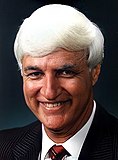
Back Федерални избори в Австралия (2019) Bulgarian Etholiad ffederal Awstralia, 2019 Welsh Parlamentsvalget i Australien 2019 Danish Parlamentswahl in Australien 2019 German Αυστραλιανές ομοσπονδιακές εκλογές (2019) Greek Elecciones federales de Australia de 2019 Spanish انتخابات فدرال سال ۲۰۱۹ استرالیا Persian Australian parlamenttivaalit 2019 Finnish Élections fédérales australiennes de 2019 French הבחירות הפדרליות באוסטרליה 2019 HE
| ||||||||||||||||||||||||||||||||||||||||||||||||||||||||||||||||||||||||||||||||||||||||||||||||||||||||
All 151 seats in the House of Representatives 76 seats were needed for a majority 40 (of the 76) seats in the Senate | ||||||||||||||||||||||||||||||||||||||||||||||||||||||||||||||||||||||||||||||||||||||||||||||||||||||||
|---|---|---|---|---|---|---|---|---|---|---|---|---|---|---|---|---|---|---|---|---|---|---|---|---|---|---|---|---|---|---|---|---|---|---|---|---|---|---|---|---|---|---|---|---|---|---|---|---|---|---|---|---|---|---|---|---|---|---|---|---|---|---|---|---|---|---|---|---|---|---|---|---|---|---|---|---|---|---|---|---|---|---|---|---|---|---|---|---|---|---|---|---|---|---|---|---|---|---|---|---|---|---|---|---|
| Opinion polls | ||||||||||||||||||||||||||||||||||||||||||||||||||||||||||||||||||||||||||||||||||||||||||||||||||||||||
| Registered | 16,424,248 | |||||||||||||||||||||||||||||||||||||||||||||||||||||||||||||||||||||||||||||||||||||||||||||||||||||||
| Turnout | 15,088,616 (91.89%) ( | |||||||||||||||||||||||||||||||||||||||||||||||||||||||||||||||||||||||||||||||||||||||||||||||||||||||
| ||||||||||||||||||||||||||||||||||||||||||||||||||||||||||||||||||||||||||||||||||||||||||||||||||||||||
| ||||||||||||||||||||||||||||||||||||||||||||||||||||||||||||||||||||||||||||||||||||||||||||||||||||||||
2019 Australian federal election |
|---|
|
| National results |
| State and territory results |
The 2019 Australian federal election was held on Saturday 18 May 2019 to elect members of the 46th Parliament of Australia. The election had been called following the dissolution of the 45th Parliament as elected at the 2016 double dissolution federal election. All 151 seats in the House of Representatives (lower house) and 40 of the 76 seats in the Senate (upper house) were up for election.
The second-term incumbent minority Liberal/National Coalition government, led by Prime Minister Scott Morrison, won a third three-year term by defeating the opposition Australian Labor Party, led by Opposition Leader Bill Shorten. The Coalition claimed a three-seat majority with 77 seats, Labor finished with 68, whilst the remaining six seats were won by the Australian Greens, Centre Alliance, Katter's Australian Party and three independents.
The electoral system of Australia enforces compulsory voting and uses full-preference instant-runoff voting in single-member seats for the House of Representatives and optional preferential single transferable voting in the Senate.[2] The election was administered by the Australian Electoral Commission.
The result was considered an upset as polling had placed the Coalition consistently behind for almost three years. It was the first time since 2001 that a Federal government in Australia won a third consecutive term in office. The Coalition benefited from a stronger-than-expected showing in Queensland and Tasmania. The Liberal National Party of Queensland won 23 of the state's 30 seats with a statewide primary vote of 43%. Indeed, the net two-seat swing to the LNP in Queensland was enough to allow the Coalition to regain its majority.
On election night, Shorten declared his intention to stand down as leader of his party, but to remain in parliament.[3] The Second Morrison ministry was sworn in on 29 May 2019.[4]
- ^ "House of Representatives - Two party preferred results 1949 - present". Australian Electoral Commission. Retrieved 15 April 2023.
- ^ "Australian electoral systems". Parliamentary Library. Parliament of Australia. Archived from the original on 16 September 2018. Retrieved 16 September 2018.
- ^ "Australian PM celebrates 'miracle' win". BBC News. 18 May 2019. Archived from the original on 17 May 2019. Retrieved 18 May 2019.
- ^ Brett Worthington (29 May 2019). "Scott Morrison's Coalition ministry sworn in with a slim grip on majority government". ABC News.
Cite error: There are <ref group=lower-alpha> tags or {{efn}} templates on this page, but the references will not show without a {{reflist|group=lower-alpha}} template or {{notelist}} template (see the help page).






